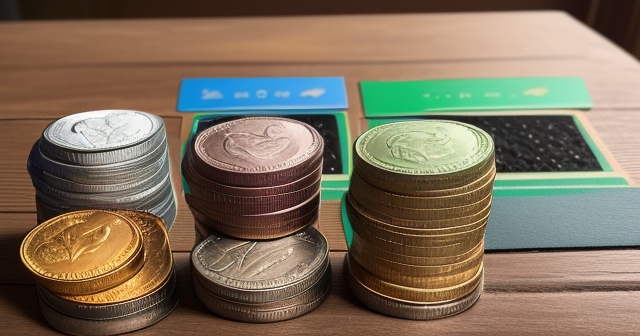Understanding the Unique Position of the Manx Pound
When we talk about currency, we often think of sovereign nations issuing their own money. But did you know that within the British Isles, there are jurisdictions that issue their own distinct currencies, pegged directly to the UK pound Sterling? The Isle of Man is a prime example, with its own unique currency, the Manx pound (IMP). For you as an investor, understanding how different currencies function, even seemingly niche ones, provides valuable insight into economic autonomy, monetary policy nuances, and the relationship between political status and financial instruments.
The Manx pound circulates alongside and is interchangeable with the UK pound on the island. While this seems straightforward, it represents a fascinating blend of practical equivalence and symbolic independence. Unlike a truly independent currency with its own exchange rate determined by market forces, the Manx pound’s value is fixed at 1:1 with Sterling. Yet, the power to design, mint, and issue its own notes and coins is a significant marker of the island’s self-governance.
Recently, the Isle of Man Treasury has embarked on a significant review of its currency, launching a public consultation that touches upon everything from the visual designs gracing the notes and coins to the very practical consideration of how we use low-value coinage like the 1p and 2p. These discussions are not merely cosmetic; they reflect evolving economic realities, technological changes, and the island’s ongoing narrative as a distinct entity.
As we delve into these developments, we’ll explore the reasons behind the consultation, the specific proposals being considered, the public’s response to changes in low-value coins, and the broader implications of the Isle of Man’s currency policy. Understanding these facets provides a microcosm of how even non-sovereign jurisdictions manage monetary symbols and policy, a knowledge base that can broaden your perspective on financial systems globally.
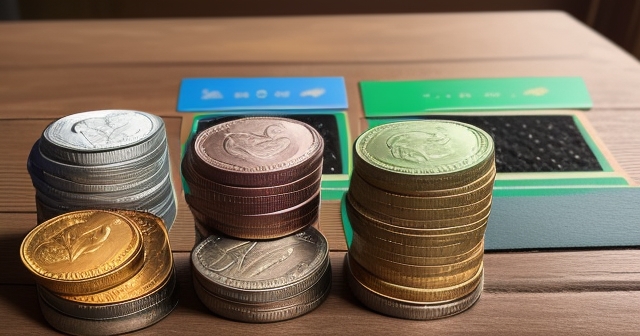
| Aspect | Details |
|---|---|
| Currency Name | Manx pound (IMP) |
| Value Peg | 1:1 with UK pound Sterling |
| Self-Governance | Power to design, mint, and issue its own notes and coins |
The Treasury’s Call for Modernization: A Public Consultation Deep Dive
Currencies are not static; they evolve over time, reflecting technological advancements, security needs, and, crucially, changes in national identity or symbols. The Isle of Man Treasury recognized that the time was ripe for a comprehensive look at the Manx pound’s physical form. A public consultation was launched, inviting everyone from residents to businesses and collectors to voice their opinions on the future appearance of Manx banknotes and coins.
What prompted this significant review? One major catalyst was the change in monarchy, with the ascension of King Charles III. Given that the monarch’s portrait traditionally features on the obverse (heads side) of coins and often on banknotes, a change in the sovereign provides a natural and timely opportunity to consider broader design updates across the entire currency family. This transition allows for a thoughtful evaluation of what the currency should represent in the modern era.
The consultation covers both banknotes and coins, acknowledging that while coins were last updated in 2017, the banknotes have seen little change since their designs were introduced way back in 1961. Think about how much the world, technology, and the Isle of Man itself have changed since the early 1960s! This gap highlights the need for a refresh, not just for aesthetic reasons, but potentially to incorporate enhanced security features, improve accessibility for visually impaired users, and ensure the currency remains relevant and functional.
Engaging the public in this process is a cornerstone of the consultation. The Treasury isn’t proposing a fixed set of new designs from the outset. Instead, they are opening the floor to ideas, seeking input on the themes, images, and symbols that the Manx people feel best represent their island. This collaborative approach aims to ensure that the future designs resonate with the community and tell the story of the Isle of Man in a compelling way.
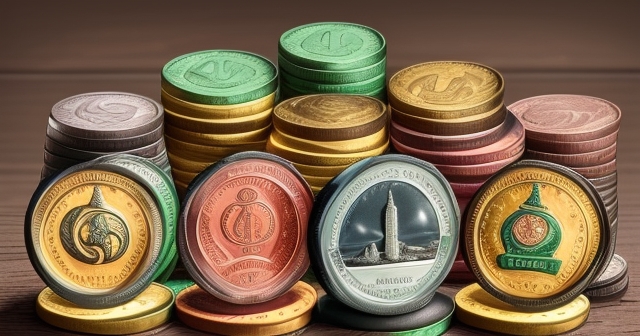
Shaping the Visual Identity: What Could Feature on Future Manx Currency?
Currency designs are powerful carriers of national identity, history, and culture. They are miniature canvases showcasing what a society values and how it sees itself. The Isle of Man’s public consultation specifically seeks ideas on what elements should be featured on future Manx banknotes and coins. This is where the conversation moves beyond mere finance and into the realm of cultural representation.
What potential themes are being explored? The consultation invites suggestions ranging from specific landmarks and natural landscapes unique to the island to historical events, notable people, and aspects of Manx culture and heritage. Imagine the possibilities: iconic structures like Castle Rushen or Peel Castle, natural wonders like the Calf of Man or Snaefell, symbols like the Three Legs of Mann (Triskelion), or perhaps depictions of traditional Manx life, wildlife, or significant historical figures.
For example, current Manx currency features elements like the Manx cat, Viking longboats, Tynwald Hill, and the Tower of Refuge. Will these enduring symbols remain, or will new motifs emerge? Should the designs highlight technological innovation, the island’s UNESCO Biosphere status, or its vibrant motorsports heritage like the TT races? The consultation provides a platform for the public to champion their favorite aspects of Manx identity.
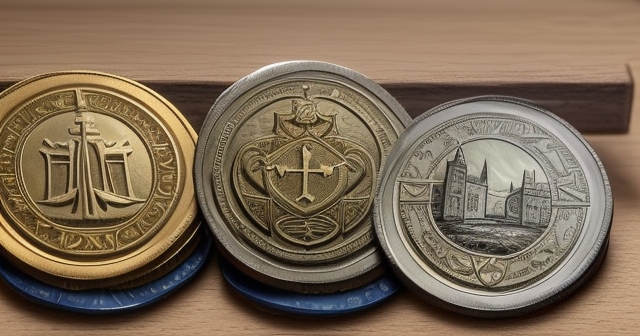
The choice of imagery is critical because these designs will be seen and handled by thousands, if not millions, of people daily (on the island) and collected by enthusiasts globally. They serve as ambassadors for the Isle of Man. The input gathered during this phase will directly inform the decisions made by the Treasury and potentially a design committee, ensuring that the final currency reflects a consensus on what symbols best represent the island to itself and the wider world.
From an artistic and symbolic perspective, this process mirrors how nations decide what stories their money should tell. It’s a fascinating exercise in collective identity-building through a fundamental economic tool.
The £1 Coin Conundrum: Embracing the 12-Sided Future?
One specific aspect of the currency consultation with practical implications is the future of the Manx £1 coin. For many years, both the UK and the Isle of Man used a round, nickel-brass £1 coin. However, in 2017, the UK introduced a new, highly secure, 12-sided bi-metallic £1 coin to combat counterfeiting.
The Isle of Man Treasury is now asking the public for their views on whether the island should follow suit and adopt a similar 12-sided £1 coin. This isn’t just about aesthetics; transitioning to a new coin shape and composition has significant practical considerations. It affects vending machines, parking meters, self-checkout machines, and all other devices that accept coins. Businesses and operators on the island would need to update or replace their equipment to accommodate the new coin, a potentially costly exercise.
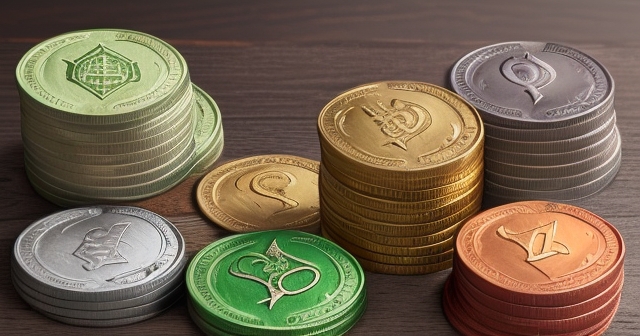
On the other hand, maintaining the current round £1 coin while the UK uses a different design could create compatibility issues for Manx residents and businesses that frequently interact with UK coinage (though legally, only Manx currency and UK Sterling are legal tender on the island; UK coins are widely accepted out of convenience). Furthermore, the 12-sided design incorporates enhanced security features, making it much harder to counterfeit, a benefit for the integrity of the Manx currency.
The consultation seeks to gauge public appetite for this change, weighing the benefits of enhanced security and potential future compatibility with UK systems against the immediate disruption and cost of upgrading infrastructure. It highlights how changes in a larger, closely linked economy (the UK) can directly influence policy considerations in a smaller, dependent jurisdiction like the Isle of Man.
Your perspective on such changes, even in a specific currency like the Manx pound, helps you appreciate the logistical and economic hurdles involved in national currency updates, a relevant concept for understanding monetary systems more broadly.
The Debate Over Small Change: Policy Challenges for 1p and 2p Coins
Beyond the design of higher denominations, the consultation and recent policy discussions have also focused on the fate of low-value coins: the 1p and 2p. This is a debate that has occurred in many countries, driven primarily by the rising cost of production relative to face value and changing consumer payment habits.
Back in 2016, the Isle of Man Treasury made the decision to stop minting new 1p and 2p coins. The simple economic reality was that it cost more to produce these coins than they were worth. Minting new pennies and twopences was essentially a loss-making operation. This isn’t unique to the Isle of Man; other jurisdictions have faced similar challenges.
Stopping the minting doesn’t immediately remove the coins from circulation. Existing 1p and 2p coins continue to be valid currency and can be used in transactions. However, over time, as coins are lost, damaged, or removed from circulation through banking, the overall number of 1p and 2p coins in use will gradually decrease.
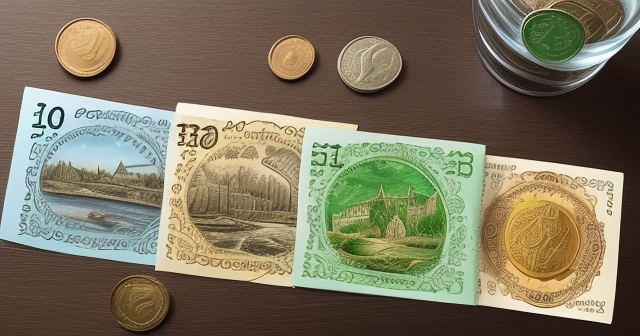
This policy implicitly encourages a shift towards transactions settling at values rounded to the nearest 5p, especially in cash transactions. While digital payments remove the need for physical small change, cash still plays a role in the economy, particularly for smaller purchases and certain demographics.
The decision to halt minting sparked a public debate, leading the Treasury to conduct a survey to understand how people felt about potentially removing these coins entirely from circulation. The results of this survey reveal interesting insights into public perception versus economic rationale.
Public Sentiment vs. Economic Reality: Navigating Concerns on Low-Value Coins
The survey conducted by the Isle of Man Treasury revealed that public opinion was largely *against* the complete removal of 1p, 2p, and even 5p coins from circulation at this time. Despite the economic argument about the cost of production, the public raised several key concerns. This highlights a common challenge in policy-making: balancing efficiency and cost-effectiveness with public perception and practical implications for daily life.
One major concern was the potential for “rounding up” prices, leading to a perception of inflation. If prices are rounded to the nearest 5p, there’s a fear that businesses might primarily round up rather than down, effectively increasing the cost of goods and services, particularly for lower-value items. For example, a price of £1.99 might be rounded to £2.00, rather than £1.95. This concern resonates deeply with individuals conscious of their daily expenditure.
Another significant concern raised was the impact on charity collections. Many charities rely on collecting small change donations. Removing 1p and 2p coins, and potentially 5p coins, could significantly reduce the value of these collections, affecting their ability to raise funds. This is a powerful social argument against purely economic efficiency.
Following the survey results, the Treasury decided *not* to proceed with the immediate removal of low-value coins from circulation. They listened to the public’s concerns. However, the policy of *not* minting new 1p and 2p coins remains in place. The long-term strategy involves encouraging businesses to voluntarily round prices to the nearest 5p as the number of 1p and 2p coins in circulation naturally diminishes. This phased approach attempts to mitigate the perceived inflationary impact and allows time for adjustment, though it relies on voluntary compliance.
| Concern | Public Reaction |
|---|---|
| Rounding Up Prices | Worries inflation will occur |
| Impact on Charity Collections | Concerns it will reduce donations |
| Removal of Coins | Opposition to complete removal |
The Isle of Man’s Currency Autonomy: More Than Just Money
The ability to issue its own currency is a defining feature of the Isle of Man’s constitutional status. While it is a Crown Dependency and its head of state is the British monarch, it is not part of the United Kingdom and has its own government, laws, and treasury. Issuing the Manx pound is a tangible expression of this independence and self-governance.
Legally, the Manx pound is a separate currency from the UK pound. However, by convention and policy, its value is always kept at parity with Sterling. This 1:1 peg simplifies trade and financial flows between the Isle of Man and the UK, its largest trading partner. It also means the Isle of Man does not have independent monetary policy in the way a sovereign nation like the UK does; it effectively mirrors the Bank of England’s interest rate decisions.
Crucially, the Manx pound is *not* legal tender in the United Kingdom. While many businesses in the UK, particularly in areas with Manx tourists or business connections, may accept Manx notes and coins out of courtesy or convenience, they are not legally obliged to do so. Similarly, UK Sterling is legal tender on the Isle of Man alongside the Manx pound.
This unique status means that while the Manx pound functions practically like Sterling on the island, its existence is a powerful political symbol. It signifies the Isle of Man’s distinct identity and its right to manage its own financial affairs. For those of us interested in finance and governance, this provides a compelling example of how currency can serve both practical economic functions and significant symbolic roles within a complex constitutional relationship.
| Characteristic | Details |
|---|---|
| Currency Autonomy | Ability to issue own currency |
| Legal Tender | Not legal tender in the UK |
| Symbol of Identity | Reflects self-governance |
The Financial Benefits of Currency Issuance: An Independent Revenue Stream
Beyond the symbolic value, issuing its own currency provides the Isle of Man Government with direct financial benefits. While the specifics are complex, the primary mechanism is related to the seigniorage gained from issuing banknotes and coins. Seigniorage is essentially the profit made by a government by issuing currency, calculated as the difference between the face value of the money and the cost of producing it.
When the Isle of Man Treasury issues a banknote or coin, they incur the cost of printing or minting. The note or coin then circulates at its face value. The difference between that face value and the production cost is a form of revenue for the government. While this might seem small on a per-unit basis, accumulated across the entire stock of currency in circulation, it can amount to a significant sum.
Furthermore, funds held by banks on the Isle of Man that correspond to Manx banknotes and coins in circulation are typically deposited with the Isle of Man Treasury. The Treasury can then invest these funds. The income generated from these investments is another source of revenue for the government. This acts as a form of investment income derived directly from the issuance of currency.
This revenue stream contributes to the island’s overall financial autonomy, helping to fund public services and government operations without sole reliance on taxation or transfers from the UK. It’s a practical economic advantage that underpins the policy choice to maintain a distinct currency, even one pegged at parity to Sterling.
So, the Manx pound is more than just a different design; it’s an active component of the island’s economic model and financial independence. This deepens our appreciation for the multifaceted nature of currency beyond its simple role as a medium of exchange.
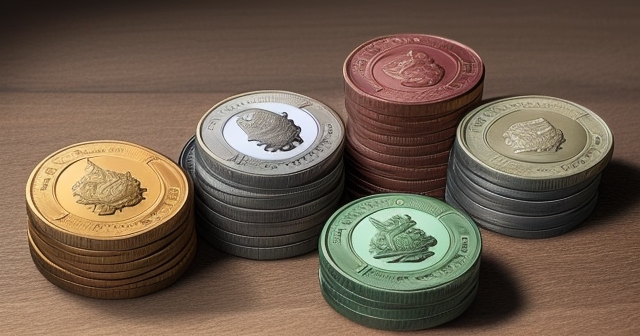
Beyond Circulation: The Realm of Manx Commemorative Currency
The Isle of Man’s authority to issue currency extends beyond standard notes and coins for daily use. Under the provisions of the Currency Act 1992, the Isle of Man Government, acting through the Treasury, is also empowered to issue “special currency,” which primarily takes the form of commemorative coins.
Commemorative coins are not typically intended for general circulation, although they are usually legal tender on the island for their face value. Their primary purpose is to mark significant events, anniversaries, or themes relevant to the Isle of Man, the British monarchy, or sometimes broader international events. These coins are often produced in limited numbers and in various metals, including precious metals like silver and gold, targeting collectors worldwide.
Over the years, the Isle of Man has issued a wide variety of commemorative coins featuring diverse themes. Examples include coins marking Royal events (like jubilees, coronations, or significant birthdays), local Manx heritage and folklore, famous ships, aircraft, wildlife, historical anniversaries (like the Battle of Britain or VE Day), and even popular cultural phenomena. These issues are often creatively designed and highly sought after by numismatists.
The issuance of commemorative currency is another way the Isle of Man leverages its currency-issuing powers. It provides another source of revenue, as the coins are sold to collectors often at a premium above their face value and metal content. It also serves as a form of international publicity for the island, showcasing its identity and history to a global audience of collectors.
For anyone interested in collectibles or the niche markets within finance, Manx commemorative coins offer a fascinating area of study, blending artistry, history, and monetary policy within a specific jurisdictional context.
Implementing Policy Changes: The Path Towards Voluntary Rounding
As we discussed, the Isle of Man Treasury decided against the immediate compulsory removal of 1p and 2p coins, largely due to public concerns about potential price increases and the impact on charity collections. However, the policy of not minting *new* 1p and 2p coins remains firmly in place. This sets the stage for a gradual transition, relying on a combination of natural attrition of existing coins and a policy of encouraging voluntary behavior change.
The Treasury’s strategy now focuses on encouraging businesses to voluntarily round cash transactions to the nearest 5p as the stock of 1p and 2p coins in circulation diminishes over time. This approach aims to ease the transition, giving both businesses and consumers time to adapt. It avoids a sudden, potentially disruptive shift that a mandated removal would entail.
Voluntary rounding means that if a total comes to £4.98, it might be rounded down to £4.95, or if it’s £5.02, it might be rounded up to £5.05. The success of this policy depends heavily on the cooperation of businesses and the willingness of consumers to accept rounded totals. There’s an inherent risk that rounding practices might not be universally applied or could disproportionately favor rounding up, reinforcing the public’s initial concerns about inflation.
The government’s role in this phase will likely involve communication and education, explaining the rationale behind the policy (cost savings, decreasing relevance of low-value coins) and providing guidelines on fair rounding practices. This period of voluntary transition will serve as a test case to see if a smooth shift away from the practical need for 1p and 2p coins is achievable without causing significant public dissatisfaction or economic distortion.
Understanding this implementation strategy provides insight into how governments manage transitions in monetary systems, often balancing strict regulation with attempts to influence public and commercial behavior through encouragement and education.
Looking Ahead: The Future Landscape of the Manx Pound
The initiatives currently underway signal a dynamic period for the Manx pound. The combination of a major design review, potentially incorporating new imagery and security features, and the ongoing, gradual shift away from low-value coinage indicates a proactive approach by the Isle of Man Treasury to keep its currency relevant and aligned with modern practices and economic realities.
The outcome of the public consultation on design will shape the visual identity of Manx currency for potentially decades to come. Will we see new landmarks, contemporary figures, or different artistic styles? Will the £1 coin become 12-sided like its UK counterpart, bringing practical consistency in handling, or will the island maintain its distinct round form? These decisions, informed by public input, will define the physical appearance of the Manx pound for the next generation.
Simultaneously, the success of the voluntary rounding policy will determine how smoothly the island transitions away from the use of 1p and 2p coins in cash transactions. This is a less visible, but equally significant, change in the practical use of currency on the island. Its effectiveness will depend on broad acceptance and fair application by businesses.
For you, as someone interested in financial markets and systems, observing these changes provides valuable context. It illustrates that currency, while seemingly fundamental, is a constantly managed instrument, subject to policy decisions, public opinion, technological change, and the broader economic environment. The Manx pound, in its unique position, offers a clear case study of how a non-sovereign jurisdiction navigates these complexities to maintain a distinct, functional, and symbolic currency.
Whether through the design consultation or the policy on small change, these developments underscore the Isle of Man’s commitment to managing its financial affairs with care and consideration for both economic efficiency and public sentiment. The future landscape of the Manx pound promises to be both visually refreshed and subtly changed in its day-to-day use.
isle of man currencyFAQ
Q:What is the Manx pound?
A:The Manx pound (IMP) is the currency of the Isle of Man, pegged at 1:1 with the UK pound sterling.
Q:Are Manx coins legal tender in the UK?
A:No, Manx coins are not legal tender in the UK, although some businesses may accept them out of convenience.
Q:What are commemorative coins?
A:Commemorative coins are special editions issued to mark significant events, often produced in limited quantities for collectors.
